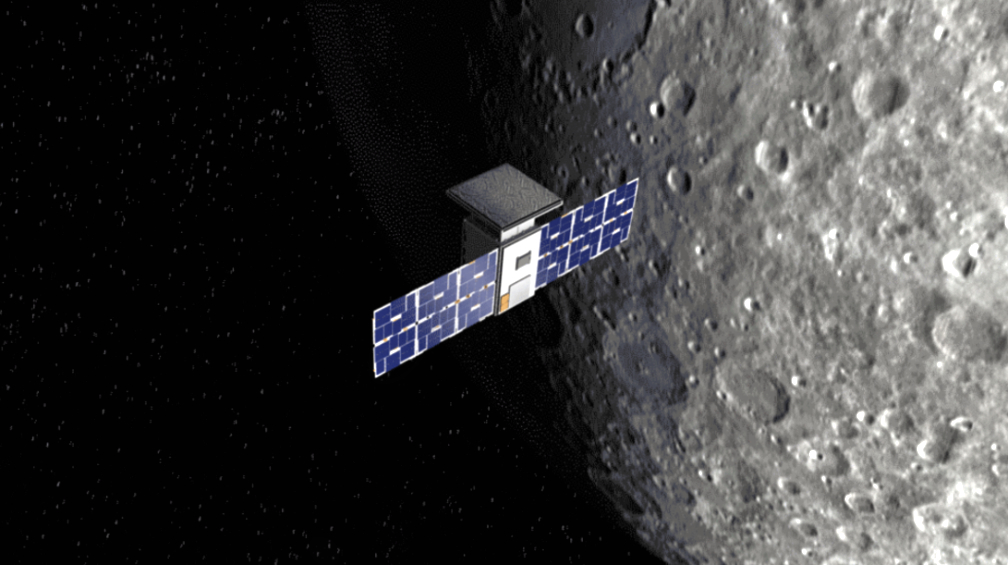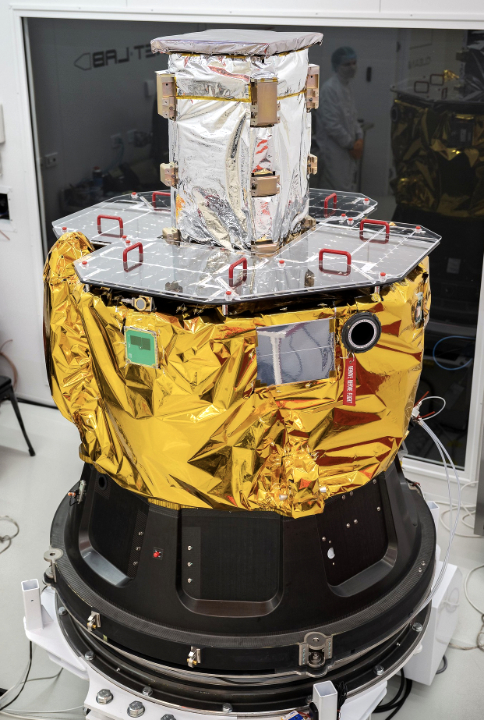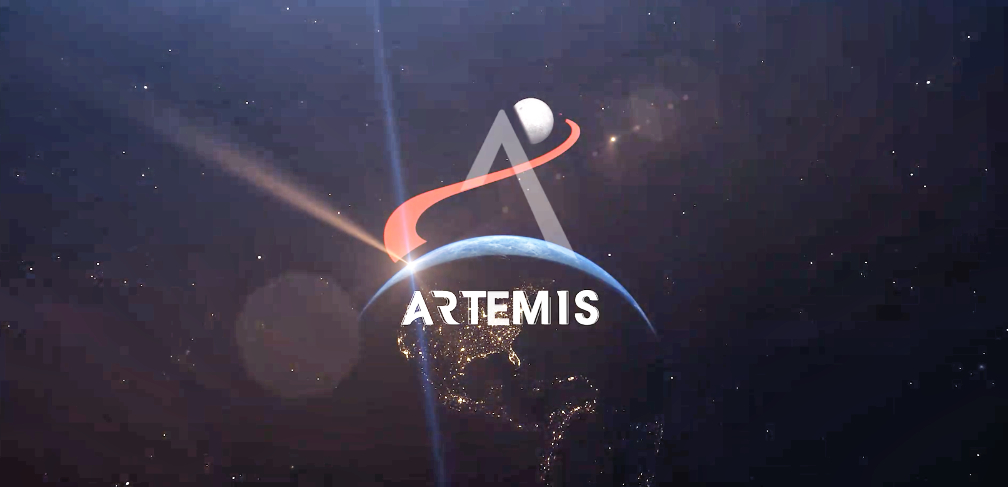


Rocket Lab launched the CAPSTONE cubesat from Rocket Lab Launch Complex 1, Pad B, located on New Zealand’s Mahia Peninsula on June 28th via an Electron rocket.
The Cislunar Autonomous Positioning System Technology Operations and Navigation Experiment (CAPSTONE) cubesat will be the first spacecraft to test the Near Rectilinear Halo Orbit (NRHO) around the Moon.
Researchers expect this orbit to be a gravitational sweet spot in space – where the pull of gravity from Earth and the Moon interact to allow for a nearly-stable orbit – allowing physics to do most of the work of keeping a spacecraft in orbit around the Moon. NASA has big plans for this unique type of orbit.

Illustration by NASA/Daniel Rutter
This historic pathfinding mission is in support of NASA’s Artemis program which will land the first woman and first person of color on the Moon.

Using the company’s Electron rocket and new Lunar Photon upper stage, Rocket Lab will inject CAPSTONE to a highly efficient, transfer orbit en route to the Moon.

CAPSTONE is owned and operated by Advanced Space in Westminster, Colorado, for NASA.

CAPSTONE’s primary objective is to test and verify the calculated orbital stability of a Near Rectilinear Halo Orbit around the Moon, the same orbit planned for Gateway.

NASA’s Gateway is a small space station that will orbit around the Moon to provide astronauts with access to the lunar surface and will feature living quarters for astronauts, a lab for science and research and ports for visiting spacecraft.

CAPSTONE will also test a navigation system developed by Advanced Space that will measure its absolute position in cislunar space using interaction with NASA’s Lunar Reconnaissance Orbiter without relying on ground stations for navigation support.

CAPSTONE is one of the first steps to learn how to operate more robust missions in this unique orbit, thus laying the groundwork for future exploration of our solar system.


NASA CAPSTONE information regarding the launch by Rocket Lab…

Image is courtesy of Rocket Lab.
NASA’s CAPSTONE cubesat is designed to test a unique lunar orbit — the smallsat is safely in space and on the first leg of its journey to the Moon.

Illustration by NASA/Daniel Rutter.
The spacecraft is heading toward an orbit intended in the future for Gateway, a lunar space station built by the agency and its commercial and international partners that will support NASA’s Artemis program, including astronaut missions.

“CAPSTONE is an example of how working with commercial partners is key for NASA’s ambitious plans to explore the Moon and beyond,” said Jim Reuter, associate administrator for the Space Technology Mission Directorate. “We’re thrilled with a successful start to the mission and looking forward to what CAPSTONE will do once it arrives at the Moon.”
CAPSTONE is currently in LEO and it will take the spacecraft about four months to reach its targeted, lunar orbit. NASA invites the public to follow the spacecraft’s journey live using NASA’s Eyes on the Solar System interactive real-time 3D data visualization. Starting about one week after launch, virtually ride along with the CubeSat with a simulated view of our solar system. NASA will post updates about when to see CAPSTONE in the visualization on NASA’s Ames Research Center’s home page as well as Twitter and Facebook.

CAPSTONE is attached to Rocket Lab’s Lunar Photon, an interplanetary third stage that will send CAPSTONE on its way to deep space. Shortly after launch, Lunar Photon separated from Electron’s second stage. Over the next six days, Photon’s engine will periodically ignite to accelerate it beyond LEO, where Photon will release the cubesat on a ballistic lunar transfer trajectory to the Moon. CAPSTONE will then use its own propulsion and the Sun’s gravity to navigate the remainder of the way to the Moon. The gravity-driven track will dramatically reduce the amount of fuel the cubesat needs to get to the Moon.
“Delivering the spacecraft for launch was an accomplishment for the entire mission team, including NASA and our industry partners. Our team is now preparing for separation and initial acquisition for the spacecraft in six days,” said Bradley Cheetham, principal investigator for CAPSTONE and chief executive officer of Advanced Space, which owns and operates CAPSTONE on behalf of NASA. “We have already learned a tremendous amount getting to this point, and we are passionate about the importance of returning humans to the Moon, this time to stay.”
At the Moon, CAPSTONE will enter an elongated orbit called a near rectilinear halo orbit, or NRHO. Once in the NRHO, CAPSTONE will fly within 1,000 miles of the Moon’s North Pole on its near pass and 43,500 miles from the South Pole at its farthest. It will repeat the cycle every six and a half days and maintain this orbit for at least six months to study dynamics.
“CAPSTONE is a pathfinder in many ways, and it will demonstrate several technology capabilities during its mission timeframe while navigating a never-before-flown orbit around the Moon,” said Elwood Agasid, project manager for CAPSTONE at NASA’s Ames Research Center in California’s Silicon Valley. “CAPSTONE is laying a foundation for Artemis, Gateway, and commercial support for future lunar operations.”

During its mission, CAPSTONE will provide data about operating in an NRHO and showcase key technologies. The mission’s Cislunar Autonomous Positioning System, developed by Advanced Space with support from NASA’s Small Business Innovation Research program, is a spacecraft-to-spacecraft navigation and communications system that will work with NASA’s Lunar Reconnaissance Orbiter to determine the distance between the two lunar orbiting spacecraft. This technology could allow future spacecraft to determine their position in space without relying exclusively on tracking from Earth. CAPSTONE also carries a new precision one-way ranging capability built into its radio that could reduce the amount of ground network time needed for in-space operations.
In addition to New Zealand hosting CAPSTONE’s launch, New Zealand’s Ministry of Business, Innovation and Employment and a University of Canterbury-led team are collaborating with NASA on a research effort to track Moon-orbiting spacecraft. New Zealand helped develop the Artemis Accords – which establish a practical set of principles to guide space exploration cooperation among nations participating in NASA’s 21st century lunar exploration plans. In May 2021, New Zealand was the 11th country to sign the Artemis Accords.

The microwave-oven sized cubesat was designed and built by Tyvak Nano-Satellite Systems, a Terran Orbital Corporation. CAPSTONE includes contributions from Stellar Exploration, Inc., Space Dynamics Lab, Tethers Unlimited, Inc., and Orion Space Systems.

NASA’s Small Spacecraft Technology program within the agency’s Space Technology Mission Directorate (STMD) funds the demonstration mission.


The program is based at NASA’s Ames Research Center in California’s Silicon Valley. The development of CAPSTONE’s navigation technology is supported by NASA’s Small Business Innovation Research and Small Business Technology Transfer (SBIR/STTR) program, also within STMD. The Artemis Campaign Development Division within NASA’s Exploration Systems Development Mission Directorate funds the launch and supports mission operations.

The Launch Services Program at NASA’s Kennedy Space Center in Florida manages the launch service. NASA’s Jet Propulsion Laboratory supports the communication, tracking, and telemetry downlink via NASA’s Deep Space Network, Iris radio design, and groundbreaking 1-way navigation algorithms.

Upcoming activities:
On Monday, July 4th, as early as 3:00 a.m. EDT, Rocket Lab’s Lunar Photon spacecraft is scheduled to perform a final engine burn to set the CAPSTONE satellite on course to the Moon for NASA.
This is a globally significant moment for space exploration. CAPSTONE is the first mission launched in support NASA’s Artemis program – the agency’s program to return humans to the surface of the Moon.
The Cislunar Autonomous Positioning System Technology Operations and Navigation Experiment (CAPSTONE) will be the very first spacecraft to test the Near Rectilinear Halo Orbit (NRHO) around the Moon. This is the same orbit intended for NASA’s Gateway, a Moon-orbiting outpost that will provide essential support for long-term astronaut lunar missions as part of Artemis.
CAPSTONE was initially launched to LEO by Rocket Lab’s Electron launch vehicle on June 28th (webcast here). Since then, Rocket Lab’s Lunar Photon spacecraft has provided in-space transportation, power and communications to CAPSTONE. On July 4th, after several days of orbit-raising burns, Rocket Lab’s Lunar Photon will carry out one final burn and release CAPSTONE on its ballistic lunar transfer trajectory for a solo journey the Moon.
Rocket Lab will be live streaming this burn and moment of separation from Mission Control via www.rocketlabusa.com/live-stream.
This has been Rocket Lab’s most complex mission yet and demonstrates our capabilities beyond launch and into spacecraft design, build, and operation. The CAPSTONE mission was Rocket Lab’s 27th Electron launch, but it also featured several significant technological firsts for the company’s space systems capabilities, including:
- First use of Lunar Photon, a high energy variant of the Rocket Lab designed and built Photon spacecraft. (Rocket Lab previously launched and continues to operate two low Earth orbit variants of the Photon spacecraft)
- First mission beyond LEO. (A typical Rocket Lab mission deploys satellites to around 500 km. from Earth. Lunar Photon will deploy CAPSTONE to around 1.3 million km. from Earth)
- First use of the HyperCurie 3D printed engine, designed and built by Rocket Lab, to provide in-space propulsion
- First collaborative mission between Rocket Lab and Advanced Solutions Inc, a Colorado-based flight-software company acquired by Rocket Lab in late 2021
- First time using the FR-lite satellite radio, a near and deep space capable small spacecraft telemetry and control radio technology that Rocket Lab has an exclusive license agreement with Johns Hopkins University Applied Physics Laboratory to manufacture
- First time a Rocket Lab Electron second stage has de-orbited and reentered Earth’s atmosphere the same day as launch, leaving behind no space debris.
